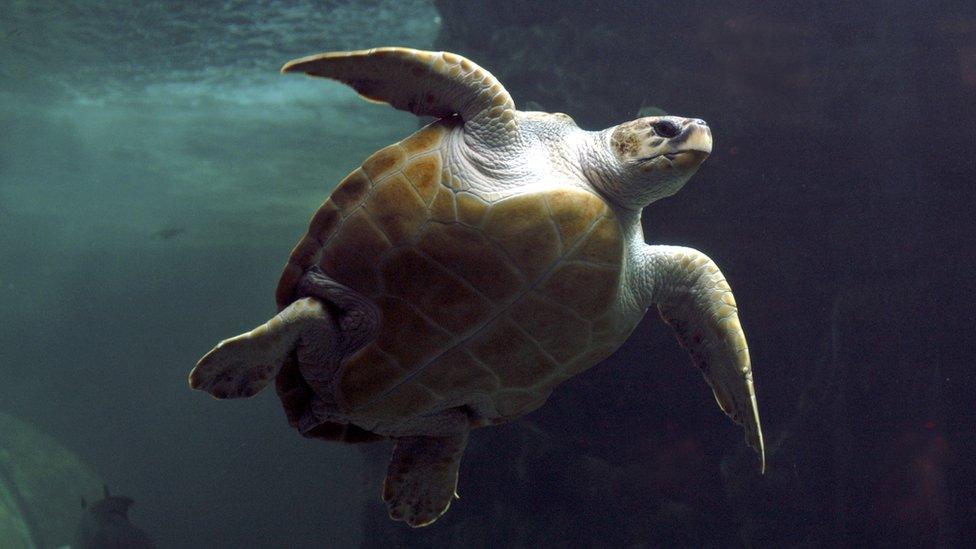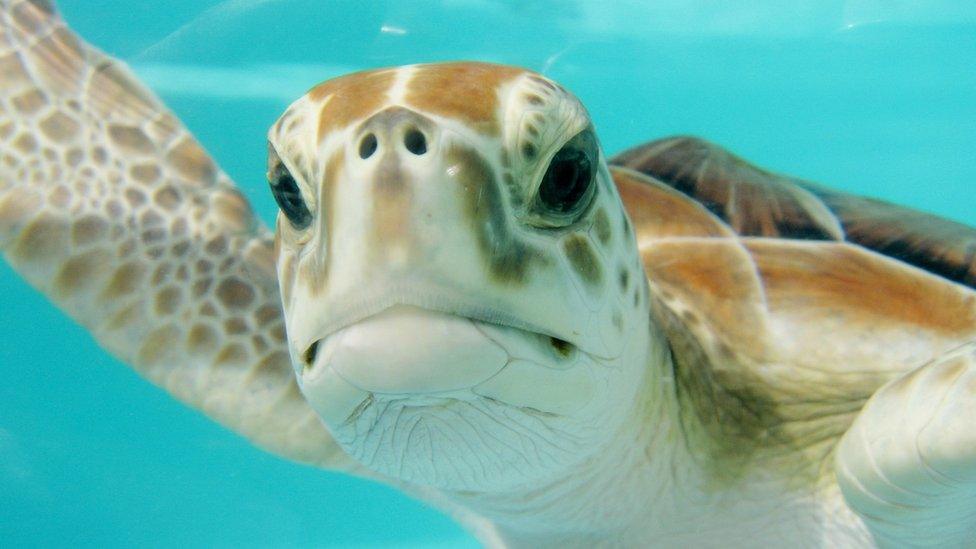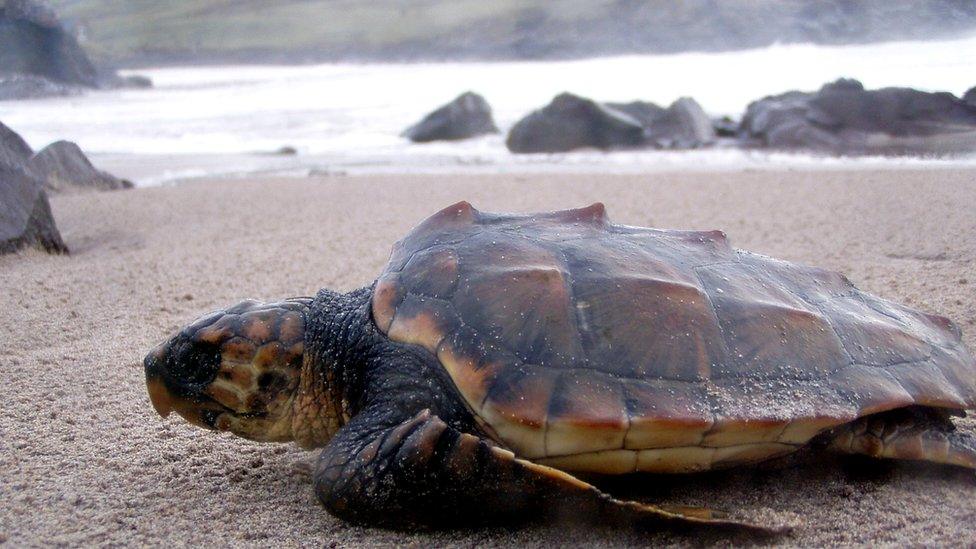Easyjet passengers to Gatwick delayed to protect turtles
- Published

Loggerhead turtles are a threatened species
Easyjet passengers were left stranded for two days on a Greek island after a relief flight was cancelled to protect a threatened turtle population.
The flight from Zante to London Gatwick was cancelled on Sunday over technical issues, which continued through Monday.
The airline apologised but blamed the relief plane not reaching the airport on the island's night flight curfew.
Night flights are prohibited on Zante as planes pass over a beach where loggerhead turtles nest.
The curfew is in place on the island, which is also known as Zakynthos, because the lights and noise can disturb the animals.

Passengers were left waiting for around 55 hours
About a quarter of passengers made it home on alternative flights, and the remaining passengers took off on Tuesday.
A spokeswoman for Easyjet said: "Engineers were immediately dispatched to Zante and believed that the technical issue was rectified yesterday [Monday], however it then reoccurred before boarding which meant the flight could not operate.
"The safety of our passengers and crew is our highest priority and we will only operate if it is safe to do so.
"We do all possible to try and minimise delays and as such planned to send a replacement aircraft. Unfortunately, due to the night curfew rule at the airport, we were unable to get the replacement aircraft into the airport yesterday [Monday]."

Hatchlings usually emerge at night and overhead flights can disorientate them
One passenger, Rebecca Clark, tweeted Easyjet on Monday asking: "Can you let us know what's going on? Day two stuck at Zante airport. Now replacement flight isn't going. No staff coming to see us!"
On Tuesday, Mark Longbottom tweeted: "Day 3 - have given up on #easyjet and have been saved by Thompson's though and fly today."
A spokeswoman for Easyjet added: "Passengers have been provided with hotel accommodation and expenses in line with EU regulations and will also be entitled to compensation.
"We are very sorry for the delay and thank customers for their understanding."

Loggerhead sea turtles

Named for their large heads, adult males generally reach about one metre in size and live at least 50 years, but much older and larger specimens, weighing up to 70st, have been found
Listed on the International Union for Conservation of Nature Red List of Threatened Species as 'vulnerable'
Populations are declining due to pollution, accidental capture and shrimp trawling and development in their nesting areas
Hatchlings usually emerge from beneath the sand at night and human beach activity and beachfront lighting can disorientate them on their journey to the sea
Mature females will return, sometimes over thousands of miles, to the beach where they hatched to lay their own eggs
Nesting takes place about every two years and around 110 eggs are laid per clutch
Sources: National Geographic, WWF, ICUN

- Published23 October 2015
